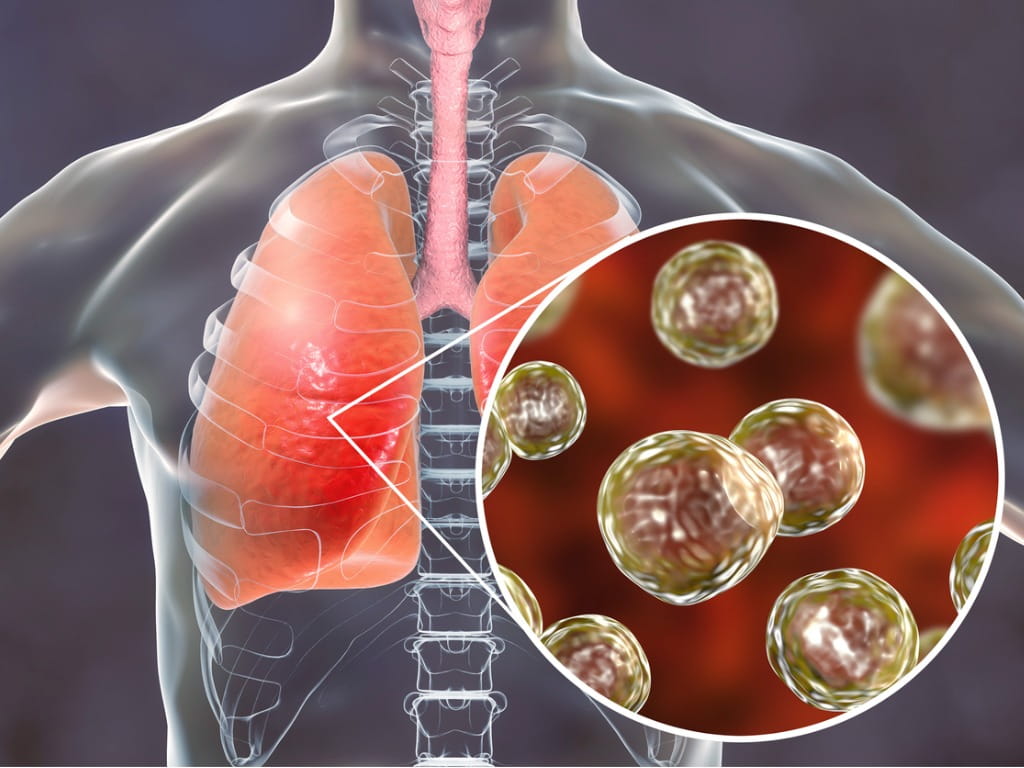What is Blastomycosis?

The Bottom Line
Blastomycosis is a rare fungal infection that can affect children, adults, and animals. Blastomycosis is caused by exposure to Blastomyces, a fungal species that lives in soil, decaying leaves, and wooded areas. Symptoms of blastomycosis include coughing, fevers, and fatigue. Treatment involves oral or intravenous antifungal medications.

What is blastomycosis?
Blastomycosis is a rare fungal (mold) disease that affects humans and animals. Blastomycosis is caused by Blastomyces, a fungus found naturally throughout portions of the United States and Canada. There are at least seven different species of Blastomyces fungi currently recognized. Because some of the earliest cases of blastomycosis were identified in the midwestern region of the United States, the condition was initially called “Chicago disease”. Currently, the highest rates of severe blastomycosis occur in midwestern states including Wisconsin, Michigan, and Minnesota. Both children and adults can be infected with blastomycosis.
Where is blastomycosis found?
Blastomyces, the fungi that cause blastomycosis, are present in moist soil and other organic matter (like decaying leaves and woodpiles) and are found near heavily wooded areas and waterways. When the soil is disrupted through digging, hiking, or other activities, Blastomyces can spread throughout the air and be inhaled. The inhaled Blastomyces then convert to yeast within the body, causing infection after an incubation period of several weeks to months.
What are symptoms of blastomycosis?
Up to ten percent of people infected with blastomycosis don’t have symptoms. Infected individuals who develop symptoms can experience cough, fever, chills, and fatigue. These signs and symptoms may resolve without treatment in some individuals, but they may also progress to include shortness of breath, pneumonia, and respiratory failure. Because the initial signs and symptoms of blastomycosis are similar to those of other infections, including COVID-19, delays in diagnosis are common.
What does blastomycosis do to your body?
Most cases of blastomycosis involve the lungs, but blastomycosis can also affect other organs including the skin, brain, bone, and genitourinary system. Skin changes associated with blastomycosis often affect the face, chest, or back, and can be flat, raised, or crusted in appearance. Patients with genitourinary involvement may experience painful or difficult urination, testicular swelling, or pelvic pain. When blastomycosis infects the brain, headaches, seizures, or meningitis can occur. People with weakened immune systems are more likely than healthy individuals to develop severe complications of blastomycosis.
Is blastomycosis contagious?
Blastomycosis is generally not contagious and does not easily spread from one person to another. Blastomycosis commonly occurs in sporadic cases, although outbreaks can also occur in individuals who are exposed to Blastomyces through construction or other outdoor activities. Although blastomycosis can occur in animals as well as humans, it is unlikely to be transmitted between the two species.
Can my dog get blastomycosis?
Dogs, cats, and other animals can become infected with blastomycosis. Dogs are at least ten times more likely than humans to develop blastomycosis, likely due to their habits of digging and sniffing the ground. Antifungal medications, including itraconazole, can be used to treat canine blastomycosis infection. Unfortunately, in one study, 13% of dogs with blastomycosis were euthanized without any attempts at treatment, due to the owners’ inability to pay for the antifungal medications.
Is there a treatment for blastomycosis?
Oral or intravenous antifungal medications, including itraconazole and amphotericin B, are effective in treating blastomycosis in humans. People with mild signs or symptoms can be treated on an outpatient basis, while those with more severe symptoms typically require hospitalization. The duration of treatment is usually prolonged, with some patients requiring an entire year of antifungal therapy. Because many antifungal medications can cause fetal harm, pregnant people with blastomycosis often require hospitalization and careful monitoring.
What should I do if antifungal medications make me sick?
If unexpected or worrisome symptoms develop after taking antifungal medications, or if too much was taken, get guidance from Poison Control immediately. Help from Poison Control is available at www.poison.org and by phone at 1-800-222-1222. Both options are free, confidential, and available 24 hours a day.
Kelly Johnson-Arbor, MD
Medical Toxicologist
Contact information for media requests
Poisoned?
Call 1-800-222-1222 or
Prevention Tips
- If you have a weakened immune system, take caution when digging into soil or walking through wooded areas.
- Seek medical attention if you develop unexpected skin changes or persistent fevers after visiting midwestern areas of the United States.
- Tell your doctor if your pet is diagnosed with blastomycosis, as you may also require testing for the disease.
This Really Happened
Two groups of elementary school students, and their adult chaperones, visited an environmental camp in Wisconsin. While at the camp, the school groups visited a beaver pond there they learned about beaver ecology and explored a beaver lodge. More than half of the individuals in each of the school groups later developed blastomycosis, with initial signs and symptoms occurring 21-106 days after visiting the camp. The most common initial symptoms were cough, headache, chest pain, and weight loss. Ten patients were hospitalized, but there were no deaths or other complications reported in the affected individuals. A health department investigation found Blastomyces growth in soil samples from the beaver lodge and in decomposed wood near a beaver dam (from Klein, et al).For More Information
References
Mazi PB, Rauseo AM, Spec A. Blastomycosis. Infect Dis Clin North Am. 2021 Jun;35(2):515-530.
Poisoned?
Call 1-800-222-1222 or
Prevention Tips
- If you have a weakened immune system, take caution when digging into soil or walking through wooded areas.
- Seek medical attention if you develop unexpected skin changes or persistent fevers after visiting midwestern areas of the United States.
- Tell your doctor if your pet is diagnosed with blastomycosis, as you may also require testing for the disease.
